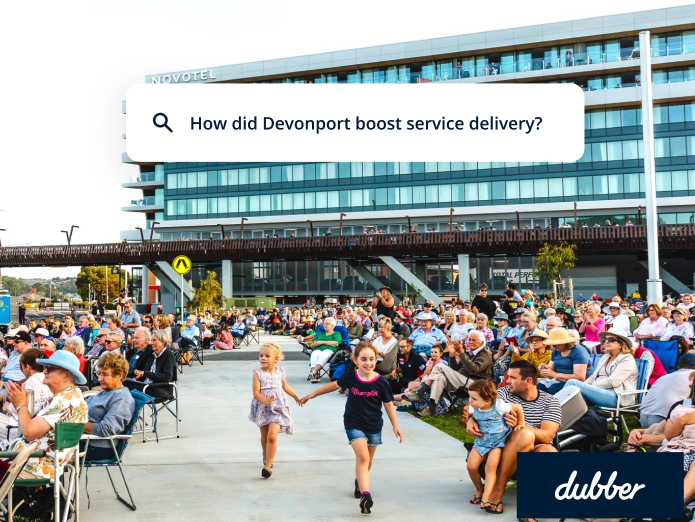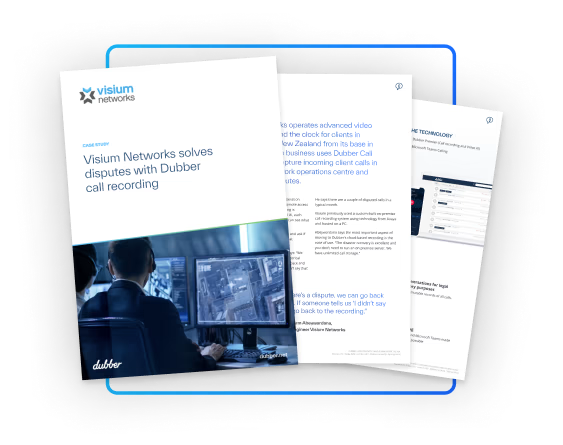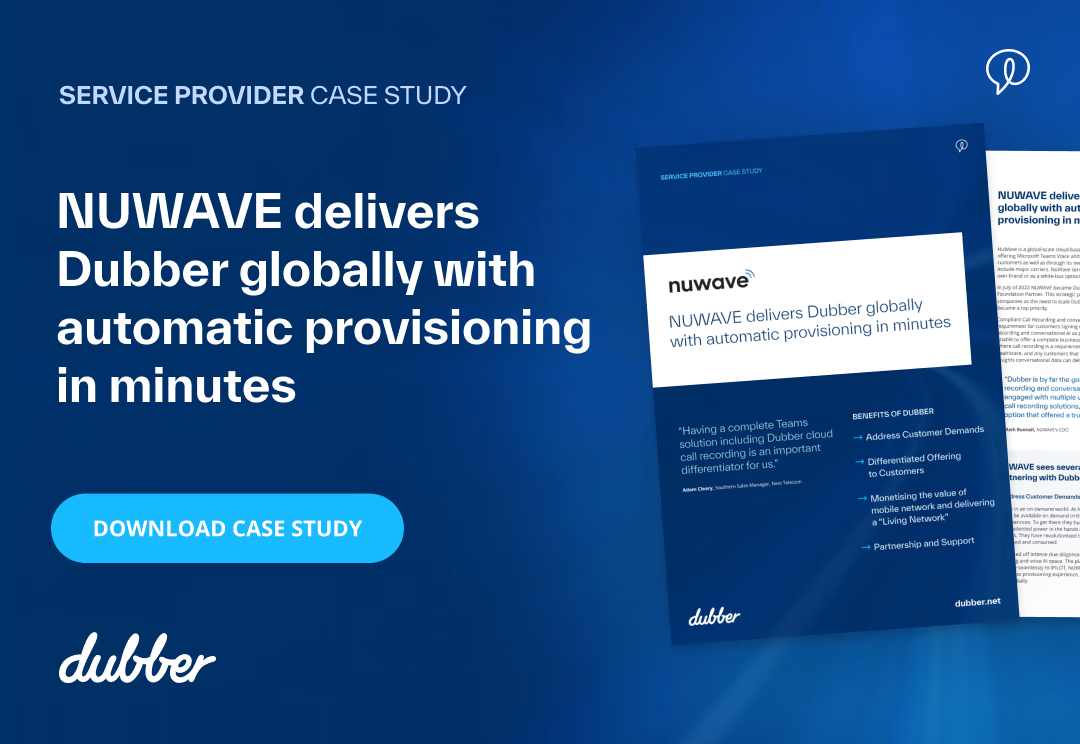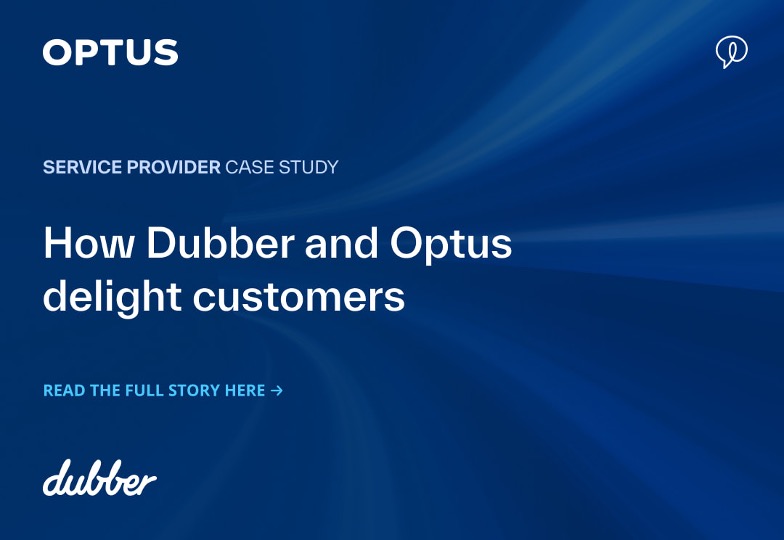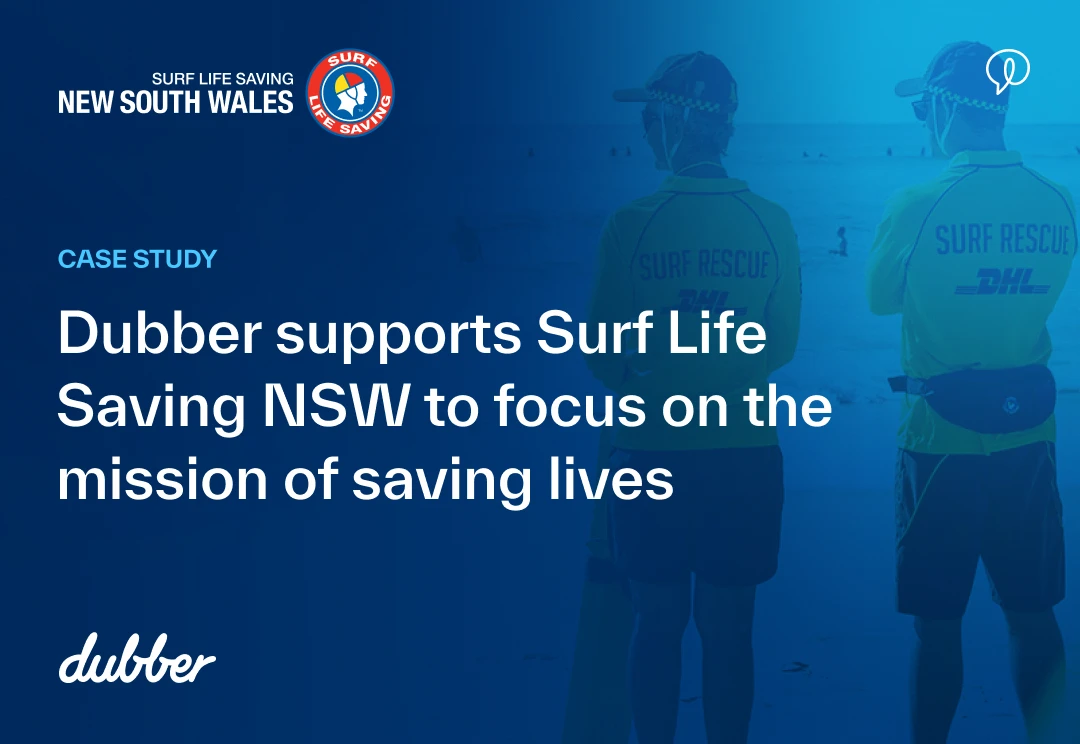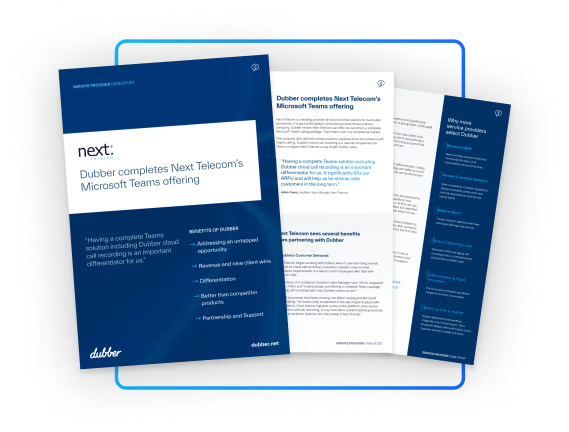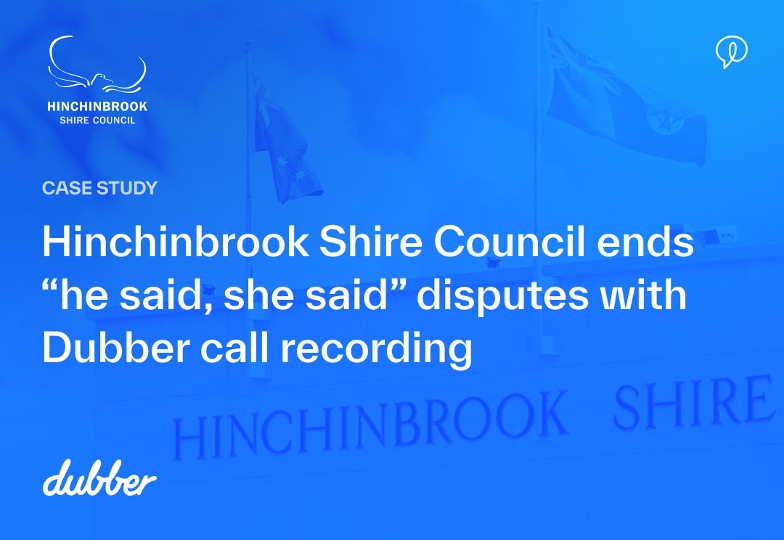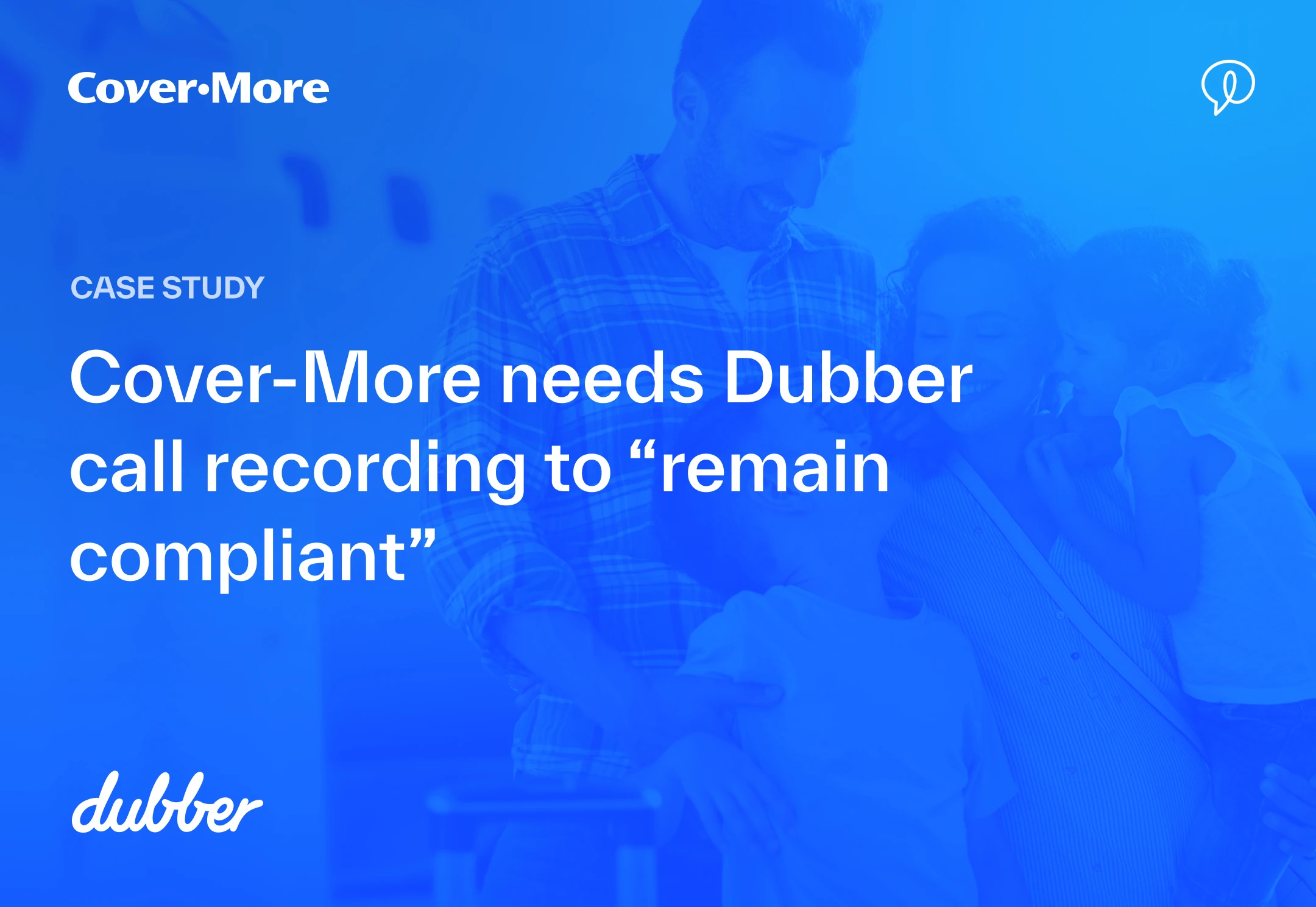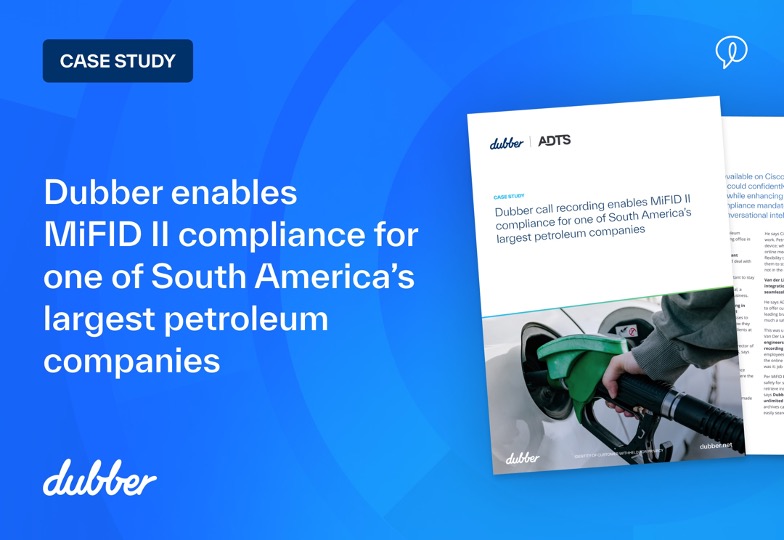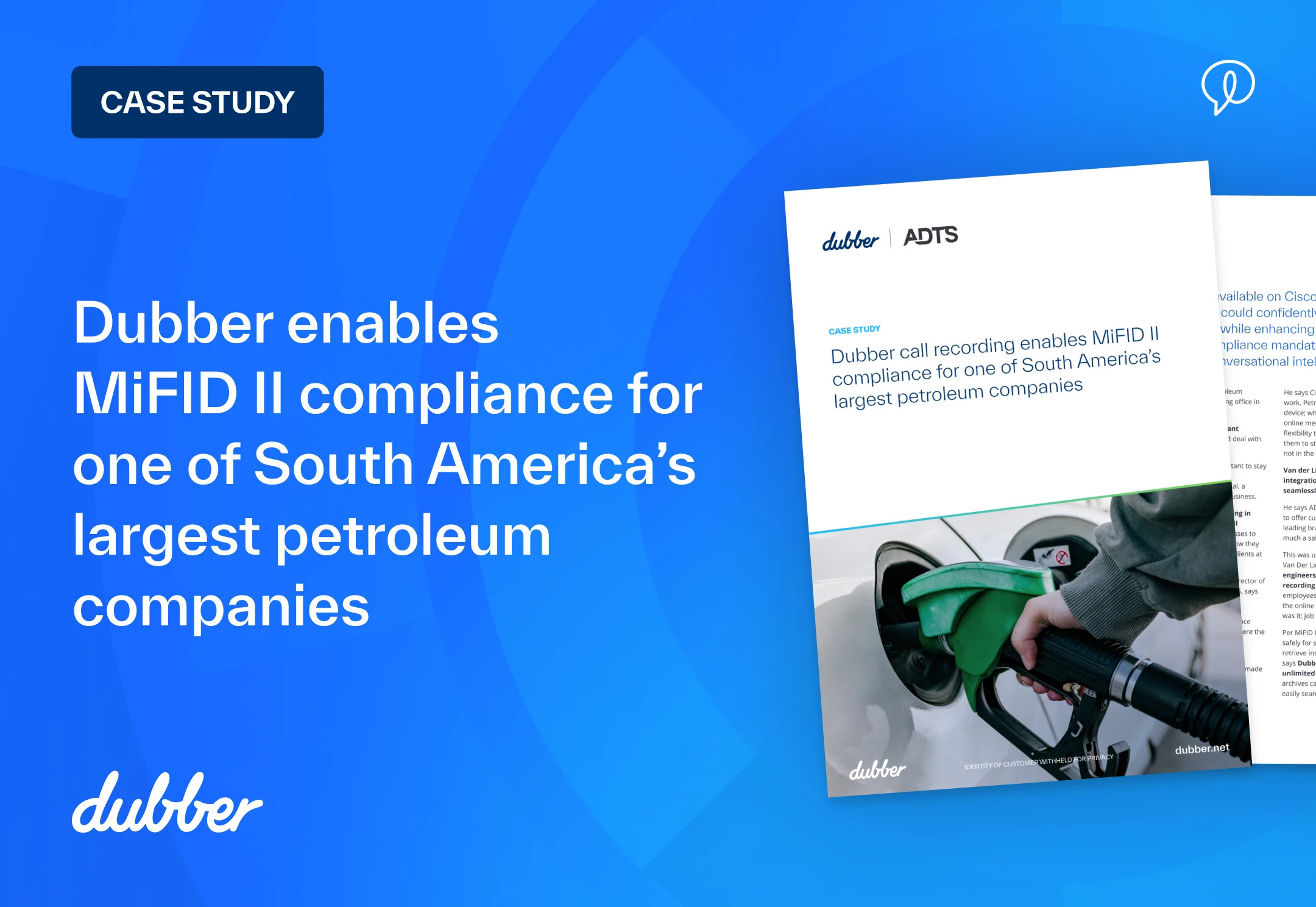Surf Life Saving New South Wales (SLSNSW) uses Dubber call recording and voice AI to create records which may be needed if there is an investigation into the way it responded to a rescue request.
Chief Information Officer, Matthew Ingersole says SLSNSW frequently needs to provide evidence in coronial inquests and other official enquiries when there is a loss of life, insurance claim or reportable incident. He says: “Recording and transcribing all of the phone calls with Dubber is an important part of that”.
SLSNSW is an emergency service dedicated to saving people from drowning along the 2100 km New South Wales (NSW) coastline. While the organisation’s 79,000 members are a familiar presence on the states’ beaches all year around, its responsibility extends beyond to the entire NSW coastline. There are around 25,000 volunteer lifesavers at 129 local clubs and about 1000 professional lifeguards. SLSNSW co-ordinates all rescue activities from its State Operations Centre at Belrose in Northern Sydney.
Ingersole says that as well as evidence for inquests and investigations there are other situations where the organisation needs to provide evidence of the actions it takes. “We do all this through our information management systems, but we back up and reinforce this through call recording. We record all the calls that come into the operations centre as well as all the radio traffic, that way we get a complete picture of what happens”, he says.
Calls come into the centre from multiple locations. It could be a member of the public who spots someone in trouble and phones in, duty officers patrolling beaches might radio into the centre and the police have a direct line for emergencies.
He says Dubber is ideal for his organisation’s needs: “We like that there is a date and timestamp, so we know exactly what time a call came in and exactly what time we responded. This provides a chain of evidence which can be helpful if we ever need to show an investigation that we acted appropriately. It’s also useful for educating staff on how to handle calls.”
There is still a system for recording incidents, but Ingersole says the big advantage of Dubber for its operators is that they can get on with responding to the call, as the recording is automatic. In the past, the operations team would have needed to make manual notes at a critical time of allocating resources.
Every moment counts when calls come into the operations centre. The average time for a rescue is 10 to 15 minutes from when the call comes in and shaving seconds off the call response can save lives.
Ingersole says: “Where we can, we’d prefer to ditch the report writing and concentrate on getting someone into the water and performing a rescue. That’s the number one priority. Documenting the incident is very much the secondary priority.”
He says with the Dubber platform, an operator can go back after dealing with the call and replay it. “And now that we’ve added Dubber transcription they can copy the content of the entire call and paste that into the incident log as well. That’s a massive time saving for us and helps with accuracy.”
Away from reporting, SLSNSW uses Dubber call recordings to put together case studies for staff training. “We can put the telephone calls connected to an incident together with any radio messages in sequence and show new operators what the final report looked like. It means they get to see a real-world example. We find that it is powerful from a training perspective,” Ingersole says.
SLSNSW also uses Dubber’s AI-enabled sentiment analysis to get an overview of incoming calls. Ingersole says the organisation can see where operators may need extra coaching on the best way to handle incidents.
“Finding calls is easy, thanks to the user interface which simplifies searching and allows call tagging. This is a powerful feature for SLSNSW because at times staff need to find, tag and batch all the calls related to an incident,” he says.
Before moving to Dubber, SLSNSW used on-premise call recording. Ingersole says there was a problem with network updates breaking that system and it was unable to capture mobile phone calls. Moving to the cloud with Dubber, natively integrated into Telstra’s infrastructure solved both problems.
He says: “Through Dubber, Telstra Liberate and TIPT all working together we can record all calls including mobiles. We’re really happy with Dubber. The Dubber-Telstra partnership makes it so easy. We just pay a monthly fee, and it all just works. We don’t need to worry about hosting it ourselves.”
